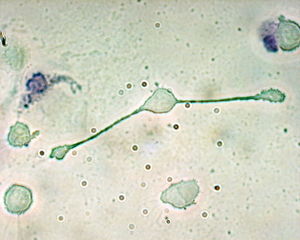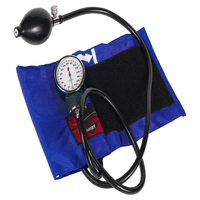Minocycline and Neurological Disease

We recently talked about the fascinating new data on the use of the antibiotic minocycline for treating stroke. The reason is that minocycline is also an anti-inflammatory and it also prevents “apoptosis” or programmed cell death. It has been found to be neuroprotective in animal models of stroke, traumatic brain injury and neurodegenerative disorders. Minocycline also prolongs survival and reduces the loss of motor neurons in transgenic mouse models of amyotrophic lateral sclerosis (ALS), a.k.a. motor neuron disease, a.k.a. Lou Gehrig’s disease.
But as with any new research, we always have to go back and re-check and replicate everything. How many times have you heard a news item about some major breakthrough, and then you never again hear anything about it?
An article in today’s issue of the Lancet has indicated that minocycline may be harmful to people with ALS. This is important and will have implications for several clinical trials that are either planned or in progress for trying minocycline in people with dementia, stroke, Huntington’s disease and multiple sclerosis.
The United States Western ALS Study Group based at Columbia University in New York, undertook a randomized phase III trial to test the efficacy of minocycline as a treatment for ALS in 412 patients. Patients who took minocycline deteriorated at a 25% faster rate compared with people on placebo.
Therefore the authors suggest that trials of minocycline in other neurological diseases should be reassessed. It is possible that minocycline might be detrimental in patients with other neurological diseases as well.
There is also an editorial comment by Mike Swash, who was once one of my teachers. He talks about the importance of early diagnosis in ALS:
“Clinicians and patients alike would prefer ALS therapy to be tested as early as possible, but there are unresolved difficulties with accurate early diagnosis, particularly the absence of a specific diagnostic test. Might some of the compounds that have failed in clinical trials show benefit if tested at disease onset in human beings?” He concludes that the time has come for new approaches to trial design: “The aim must be to design informative, short, inexpensive, and sensitive phase I/II studies before large phase III studies are attempted”.
This is another one of those examples where a medicine introduced for one indication may have many others. In contrast to an antibiotic being used to treat neurological problems, there has recently also been a great deal of interest in the antibiotic potential of some medicines used to treat depression and psychosis.
There is a mountain of new information on this topic, which promises to revolutionize many of our concepts of health and disease. I shall keep you posted as more material is published.
A Virus Linking Depression, Aging and Heart Disease

We have known for a long time that there are close links between depression, aging and heart disease, but the nature of the link has remained elusive. Most of the smart money has been on inflammation, but there could be other candidates.
New research in the journal Brain, Behavior and Immunity has linked an increase in two inflammatory proteins in the immune system with a latent viral infection and proposes a chain of events that might accelerate cardiovascular disease. It is possible that the same process may be involved in a number of other ailments that can afflict us, as we get older. The findings also suggest that chronic depression may play a key role in initiating the cascade that can lead to the development of coronary artery disease.
It has been known for some time that increased levels of the proinflammatory cytokines, TNF-α and IL-6, predict mortality and morbidity. High levels of each of them are found in the plasma and in atherosclerotic lesions of people with cardiovascular disease.
The levels of IL-6 in the body increase as the immune system ages. Some of the IL-6 is generated by immune cells – macrophages – that go to the site of an infection or injury. Earlier work by the team also showed that increases in psychological stress and depression could substantially raise the levels of IL-6 and TNF-α in the body.

Increased stress and depression can also trigger latent viruses to reactivate and begin reproducing inside cells. The viruses of greatest interest are some herpes viruses such as the Epstein-Barr virus (EBV). We know that up to 90% of the people in North America have been infected by EBV by the time they are adults.
If EBV begins to multiply in cells in the body, it produces a protein called dUTpase that, in turn, can stimulate macrophages to make yet more IL-6.
The researchers developed a model to test these linkages by using endothelial cells that line the inside of veins in umbilical cord tissue. I spent years working with these cells myself, and they provide an excellent substrate for examining vascular responses and the interaction between blood vessels and macrophages when exposed to the virus as well as the dUTpase protein.
As expected, the production of IL-6, as well as TNF-a, were increased just as they would be as part of the inflammatory process in the body. Such chronic incidents of inflammation are integral to the onset of atherosclerosis and an array of other diseases.
This work suggests a new way of thinking about how vascular diseases develop. We carry around these latent herpes viruses in our bodies virtually all our lives and periodically they can hurt us as we age, develop depression or, perhaps a nutritional imbalance.
Taken together with the recent data on the physical effects of loneliness, if you want to live a long and healthy life:
- Watch you mood: depression can kill you
- Stay socially engaged: loneliness can be fatal
- Maintain a balanced diet
- Take some physical exercise every day
- Learn – and practice! – some simple stress management techniques. You can obtain some at RichardGPettyMD.com
Molecules of Loneliness

It is well known that our social environment has a major impact on our health, wellness and longevity. Lonely, socially isolated adults have a higher mortality than those who are socially engaged.
There has been a lot of speculation about the factors involved, and there is a fascinating study published in the current issue of the journal Genome Biology.
Researchers from UCLA identified a distinct pattern of gene expression in the white blood cells of people who experience chronically high levels of loneliness. The findings suggest that feelings of social isolation are linked to alterations in the activity of some of the genes that drive inflammation providing a molecular framework for understanding why social factors are linked to an increased risk of heart disease, viral infections and cancer.
Lonely people suffer from higher mortality than people who are not, and the debate has been whether that risk is a result of reduced social resources, or whether it is biological.
In this study the researchers used DNA microarrays to survey the activity of all known human genes in white blood cells from 14 individuals in the Chicago Health, Aging, and Social Relations Study. Six participants scored in the top 15% of the UCLA Loneliness Scale, a widely used measure of loneliness that was developed in the 1970s; the others scored in the bottom 15%. The researchers found 209 gene transcripts that were differentially expressed between the two groups, with 78 being over-expressed and 131 under-expressed. Genes over-expressed in lonely individuals included many involved in immune system activation and inflammation. At the same time, several other key gene sets were under-expressed, including those involved in antiviral responses and antibody production.

The first author on the study s Steve Cole, an associate professor of medicine in the division of Hematology-Oncology at the David Geffen School of Medicine, and a member of the UCLA Cousins Center for Psychoneuroimmunology, and he had this to say:
“What this study shows is that the biological impact of social isolation reaches down into some of our most basic internal processes the activity of our genes.
We found that changes in immune cell gene expression were specifically linked to the subjective experience of social distance. The differences we observed were independent of other known risk factors, such as health status, age, weight, and medication use. The changes were even independent of the objective size of a person’s social network.”“We found that what counts at the level of gene expression is not how many people you know, it’s how many you feel really close to over time.”
This study was supported by the National Institutes of Health, the Mind, Body, Brain and Health Initiative of the John D and Catherine T MacArthur Foundation, the Norman Cousins Center at UCLA, the John Templeton Foundation, and the James B Pendelton Charitable Trust.
Although small, this is remarkable and shows how much nature not only abhors a vacuum, but also dislikes isolation. We are social animals and anything that gets in the way of that will likely lead to a very poor outcome.
It is fitting that Norman Cousins, for whom the UCLA center is named, had this to say:
“The eternal quest of the individual human being is to shatter his loneliness.”
“The most terrible poverty is loneliness and the feeling of being unloved.”
-Mother Teresa of Calcutta (Albanian-born Indian Nun, Humanitarian and, in 1979, Winner of the Nobel Peace Prize, 1910-1997)
The Curse of Crystal Meth

I have the dubious distinction of living in a part of the United States with one of the highest rates of methamphetamine abuse in the country. Around here most of the first time users are teenage girls who are trying to lose weight.
In the last few years the spread of methamphetamine abuse across the United States has been as rapid as it has been alarming. Until about six years ago, methamphetamine use was seen mostly in the western and rural United States. Then it jumped over the Mississippi and continued its demonic march to the sea and Georgia has been hit like a ton of bricks.
Not only can crystal met ravage the brains of users, they can get a wide range of physical problems including inflammatory and immune problems throughout the body.
Methamphetamine abuse has now expanded rapidly throughout the rest of the country and across different ethnic groups. According to the 2005 National Survey on Drug Use and Health it is estimated that 10.4 million Americans ages 12 or older have used methamphetamine at least once in their lifetimes for non-medical reasons.
There is a new and important study from the Scripps Institute that has shown that long-term methamphetamine use changes circulating proteins in drug users, causing aberrant immune responses. As a result, increased levels of pro-inflammatory cytokines – proteins that are involved in immune responses – may initiate a previously unrecognized molecular mechanism for the development of cardiovascular disorders including vasculitis, an inflammation of the blood vessels.
It appears that methamphetamine can add sugars (a.k.a. “glycate”) proteins. The researchers found that the immune system responds dramatically to this methamphetamine-induced glycation, which may lead to vascular inflammation. There was a direct relationship between methamphetamine intake and the level of circulating antibodies in animal models. This immune response, coupled with antibodies binding to methamphetamine, might make the drug less biologically available leading to an increased need for higher and higher doses, a problem found among chronic methamphetamine users.
The resulting glycated proteins are called advanced glycation end products (AGEs) that modify the function of proteins and are associated with a number of diseases including diabetes and Alzheimer’s disease.
Methamphetamine-AGE proteins not only increased antibody production, but also were strong enough to overcome the drug’s natural immunosuppressive qualities. Furthermore, a wide range of cytokines directly linked to AGE exposure were increased in rats that self-administered methamphetamine.
The study also showed that even limited daily access to the drug was enough to produce an over-expression of vascular endothelial growth factor which is a potent signaling cytokine involved in angiogenesis and vasodilatation.
If you know anyone tempted to dice with this vile toxin, ask them to have a look here.
Exercise May Be the Best Anti-inflammatory

It is almost twenty years since I was awarded my research doctorate and some of what I said at the time was controversial: I made a lot about the link between inflammation, diabetes mellitus and cardiovascular disease. Now we know more, and the link is a lot less controversial.
A number of studies have suggested that regular exercise reduces inflammation but it is still not clear whether there is a definite link. And if there is a link, how does it work? One candidate that we have discussed before has been a link between the autonomic nervous system – sympathetic and parasympathetic – and inflammation. When we exercise, the sympathetic nervous system increases our heart rate and improves lung function, while the parasympathetic system helps to slow things down as we stop exercising.
A recent study by kinesiology and community health researchers at the University of Illinois provides evidence that may help explain some of the underlying biological mechanisms that take place as the result of regular exercise.
The objective of the research was to examine the independent effect of the “tone” in the parasympathetic nervous system by assessing heart rate recovery after exercise, and whether there was a link between heart rate recovery and circulating levels of C-reactive protein (CRP). CRP, which is mainly produced by the liver, circulates in the bloodstream and is a standard marker for inflammation in the body. We also know that CRP levels tend to rise as we get older, and it may one of the factors involved in the increasing rates of cardiovascular diseases, diabetes and Alzheimer’s disease as we age.
This was a cross-sectional study that focused on baseline test results from 132 sedentary, independently living individuals aged 60 to 83 (47 males; 85 females) who had been recruited to participate in the Immune Function Intervention Trial (ImFIT), a randomized longitudinal trial designed by Woods and funded by the National Institute on Aging to examine the relationship between exercise and immune function.
Participants included only individuals who did not take medications that included corticosteroids, which could interfere with immune measurements. Smokers and/or those with severe arthritis, a history of cancer or inflammatory disease, chronic obstructive pulmonary disorder, uncontrolled diabetes mellitus, congestive heart failure, recent illness or vaccination, or a positive stress test were excluded.
The physical fitness of subjects was assessed through a battery of tests that measured such variables as fatigue, blood pressure, oxygen intake and carbon dioxide elimination and heart-rate recovery in conjunction with exercise on a walking treadmill. Tests also were administered to determine the subjects’ levels of physical activity, physical fitness, emotional stress and body composition, including bone density and body fat. Blood samples also were drawn to measure CRP levels.
The results were published in a recent issue of the Journal of the American Geriatrics Society.
It is important that they measured body fat. We know that increasing the amounts of intra-abdominal fat lead to an increase in inflammation: a fat tummy becomes a factory for inflammatory mediators.
The most interesting findings related to heart rate recovery following exercise.
The speed at which people were able to get back to their resting heart rate after a strenuous exercise test was inversely related to the levels of CRP. That means that individuals who had better parasympathetic tone had lower levels of inflammation.
And as any gym rat will tell you, one of the best-known ways improve parasympathetic tone is with aerobic exercise. When an unfit person exercises it can take a long time for his or her heart rate to come back to normal. As you get back into doing regular exercise, your resting pulse rate falls and so does the time that it takes for your heart rate to recover after exercise.
Since the study was cross-sectional, i.e. the researchers took a snapshot of the participants’ reactions and measurements at a single, fixed point we cannot say anything about cause and effect relationships.
The research confirms the conclusions of previous research that has indicated that high body fat is related to high inflammation and high fitness to low inflammation, though the researchers did not parcel out total body and abdominal fat. But this new research also suggests that physical fitness may be associated with a decrease in inflammation that is independent of body fat, and that it may be mediated by the parasympathetic nervous system: high parasympathetic tone is related to low inflammation.
So the nervous system may be the key player linking fitness, fatness and inflammation.
If this is correct, exercise alone will likely not be the whole answer. We also need to address other factors that modulate the activity of the parasympathetic nervous system including:
- Physical, psychological and social stress
- Adequate good quality sleep
- Diet and nutrition: there may be foods that can increase stress on the autonomic nervous system
- Adequate hydration: dehydration can be a major stressor on the body
- Breathing: shallow breathing and hyperventilation are all known to stimulate the sympathetic nervous system and damp down the calming activities of the parasympathetic nervous system
Diabetes, Inflammation and the Heart

One of the most worrying signs in people with type 1 diabetes is damage to the nerves supplying the heart. This is called cardiovascular autonomic neuropathy, and one of its first signs is a reduction in the normal heart rate variability (HRV).
It has been known for many years that people with both type 1 and type 2 diabetes have low grade inflammation, and inflammation can have profound effects on the activity of the autonomic nervous system.
A study from Sabadell in Spain has tried to sort out these links in a study of 120 people with longstanding type 1 diabetes.
They measured a great many things including tumor necrosis factor, alpha-receptors 1 and 2, IL-6, and C-reactive protein; insulin resistance and HRV in response to deep breathing and the Valsalva maneuver” forcibly exhaling against with mouth and nose closed.
They did indeed find a link between low-grade inflammation and early alterations in the nerve supply to the heart.
This is important information: when we proposed that inflammation might be an important player in diabetes back in the 1980s, it was greeted with disbelief. Twenty years on it looks as if we might have a whole new line of treatment on the horizon, which will include nutrition and exercise as well as supplements and medications.
Obsessive-Compulsive Disorder and Inflammation

We have recently talked about the growing evidence that several types of mental illness are associated with inflammation. There are some odd neuropsychiatric illnesses that are known to be associated not just with inflammation, but with disturbances of the immune system. One of the most marked in the so-called PANDAS (Pediatric Autoimmune Neuropsychiatric Disorders Associated with Streptococcal infections) in which people may get a constellation of symptoms after a streptococcal infection. Amongst the symptoms are obsessive compulsive disorder (OCD)-like symptoms, and that has lead to the question whether OCD itself might be some kind of autoimmune illness.
OCD can be a debilitating illness in which people have obsessive, distressing, intrusive thoughts and related compulsions (tasks or “rituals“) with which they try to neutralize the obsessions. It is classified as an anxiety disorder, and it is listed by the World Health Organization as one of the top twenty most disabling illnesses in terms of lost income and diminished quality of life.
Jack Nicholson did a very good job of portraying someone with OCD in As Good As It Gets, and Tony Shalhoub’s Adrian Monk is close to reality, though few people have quite the number of different and ever-changing obsessions as the character in the show.
Now new research (NR239) presented last week at the 2007 Annual Meeting of the American Psychiatric Association in San Diego has found a link between inflammation and OCD.
Researchers from Zonguldak Karaelmas University in Turkey measured the levels of tumor necrosis factor-alpha (TNF-α) and interleukin-6 (IL-6) in 31 drug free outpatients with OCD.
Both TNF-α and IL-6 levels were significantly higher in people with OCD compared with healthy volunteers.
What this tells us is that there may well be some involvement of the immune system in the pathophysiology of OCD, and, if confirmed, that in itself might suggest some new approaches to treatment.
The next step will be to replicate the study with a larger number, and then to do a longitudinal study, to see if these inflammatory markers rise as people are getting worse, and go down as they improve.
Breast Cancer and the Gang of Four
People of a certain age will remember the ominous "Gang of Four" who were primarily blamed for the events of the Cultural Revolution in China.
Now new research published in the journal Nature has exposed an equally ominous "Gang of Four," but this time it is a set of four genes is responsible for the lethal spread of breast cancer.
A team in New York with researchers now working at the Hospital Clinic de Barcelona and the Institute for Research in Biomedecine in Spain, has identified four key genes in human breast cancer cells that play a role in metastasis, or the spread of the cancer, to the lungs.
A number of genes are already known to contribute to the spread to the lungs. But Prof Joan Massagué and colleagues at Memorial Sloan Kettering Cancer Centre, New York, now show how four co-operate to promote the formation of new tumour blood vessels, the release of cancer cells into the bloodstream, and the penetration of tumour cells from the bloodstream into the lung.
The gene set comprises EREG, MMP1, MMP2 and cyclooxygenase (COX2). (That is the same COX2 that you will have heard about as a target for some arthritis and anti-inflammatory medicines. It is the abnormal activation of all four that enables the breast cancer to invade the lungs. Although shutting off these genes individually can slow cancer growth and metastasis, the researchers found that turning off all four had a dramatic effect.
Prof Massagué said:
"The remarkable thing was that while silencing these genes individually was effective, silencing the quartet nearly completely eliminated tumour growth and spread."
In experiments on human breast tumours implanted in mice, the researchers also found that they could reduce the growth and spread of the disease by simultaneously targeting two of the proteins produced by these genes, using drugs already on the market.
"We found that the combination of these two inhibitory drugs was effective, even though the drugs individually were not very effective," said Prof Massagué. "This really nailed the case that if we can inactivate these genes in concert, it will affect metastasis."
The researchers now want to test combination therapy with the drugs – cetuximab (Erbitux) and celecoxib (Celebrex) – to treat breast cancer metastasis.
The other two genes are matrix metalloproteinases (MMP1 and MMP2) that are involved in the formation of new blood vessels.
A second study, also published in Nature, reports that investigators in Texas have isolated 87 genes that seem to affect how sensitive human cancer cells are to certain chemotherapy drugs.
The study highlights a new way to screen for alterations in cancer cells that make them specifically sensitive to treatments, so that they may leave normal tissue relatively unharmed.
This is important work that unlocks another piece of the mystery of at least one type of cancer.
It will not be the whole story: we still need to find out why tumors can spread to other organs and how environmental factors, including states of mind, may have an impact on the spread of tumors.
And it is yet more evidence that inflammation is one aspect of the spread of tumors.
Blood Pressure and the Brain

We have known for almost a century that regions of the brain are involved in the control of blood pressure.
Yet over the last three decades most of the emphasis in research into hypertension (high blood pressure) has focused on blood vessels, the heart and kidneys.
Now research from Bristol University in England has been published in this month’s issue of the journal Hypertension, and it may put the brain back into the center of research into the causes and treatment of high blood pressure.
Working with rats, the researchers isolated a protein called JAM-1 (junctional adhesion molecule-1), that is located in the walls of blood vessels in the brain. It appears to trap white blood cells causing obstruction of blood flow in some of the smallest blood vessels. This can cause inflammation and result in poor oxygen supply to the brain, which may in turn trigger events that raise blood pressure.
Though this work is in its early stages, this is exciting stuff: if confirmed, it might be possible to treat hypertension with drugs that reduce blood vessel inflammation and increase blood flow within the brain.
It also ties in with other recent research from Imperial College, London and Oxford University, in which a team of neurosurgeons and physiologists discovered changes in blood pressure while fitting brain electrodes to 15 patients for pain control.
Deep brain stimulation involves placing very thin electrodes on very exact locations in the brain and is already used to relieve pain and to help Parkinson’s disease patients with their movement.
The researchers found that they could make patients’ blood pressure increase or decrease by stimulating very specific regions of the brain with the electrodes. Regions that have been associated with blood pressure control in the past. If they stimulated an area deep down in the midbrain called the ventral periventricular/periaqueductal gray matter, blood pressure went down, and if they stimulated the dorsal periventricular/periaqueductal gray matter it went up.
Nobody is suggesting that we should start sticking electrodes in peoples’ brain, but this chance observation may have profound implications, particularly for people who drop their blood pressure too far when they are treated with standard medicines.
These two pieces of research may also help explain why a balanced inflammation–reducing diet and relaxation may both reduce blood pressure.
Fats, Inflammation and Depression

We have talked before about the associations between inflammation and psychiatric illnesses.
There is yet more evidence in the shape of a study just published in the journal Psychosomatic Medicine. by Janice K. Kiecolt-Glaser and her colleagues from Ohio State University College of Medicine in Columbus.
The study involved 43 older adults with a mean age of 66.67 years, and the results suggests that the imbalance of omega-6 and omega-3 fatty acids in the typical American diet could be associated with the sharp increase in heart disease and depression seen over the past century. The more omega-6 fatty acids people had in their blood compared with omega-3 fatty acid levels, the higher their levels of the inflammatory mediators tumor necrosis factor-alpha and interleukin-6, and the greater the chance that they would suffer from depression. These are the same inflammatory mediators associated with insulin resistance, type 2 diabetes and coronary artery disease, all of which are more common in depression. And depression is more common in diabetes, arthritis and coronary artery disease than expected.
Our hunter-gatherer ancestors consumed two or three times as much omega-6 as omega-3, but today the average Western diet contains 15- to 17-times more omega-6 than omega-3. There were 6 individuals in the study who had been diagnosed with major depression, and they had nearly 18 times as much omega-6 as omega-3 in their blood, compared with about 13 times as much for subjects who didn’t meet the criteria for major depression.
Depressed patients also had higher levels of tumor necrosis factor alpha, interleukin-6, and other inflammatory compounds. And as levels of depressive symptoms rose, so did the omega 6 and omega 3 ratio. So it seems as if the effects of diet and depression enhance each other. People who had few depressive symptoms and/or were on a well-balanced diet had low levels of inflammation in their blood. But when they became more depressed and their diets became worse – which is very common when people are depressed – then the inflammatory mediators in the blood surged.
Omega-3 fatty acids are found in foods such as fish, flax seed oil and walnuts, while omega-6 fatty acids are found in refined vegetable oils used to make everything from margarine to baked goods and snack foods. The amount of omega-6 fatty acids in the Western diet increased sharply once refined vegetable oils became part of the average diet in the early 20th century.
Depression alone is known to increase inflammation, the researchers note in their report, while a number of studies have found omega-3 supplements prevent depression.
So this more evidence for the value of eating fatty fish like salmon, mackerel or sardines two or three times a week, but be sure to avoid fish that may contain a lot of mercury. If you add more fruits and vegetables to your diet, you will also reduce your levels of omega-6 fatty acids.
I have just finished analyzing all the new literature on using fish oils for the prevention and treatment of psychological and psychiatric problems, and I am going to post my findings in the next couple of days.






